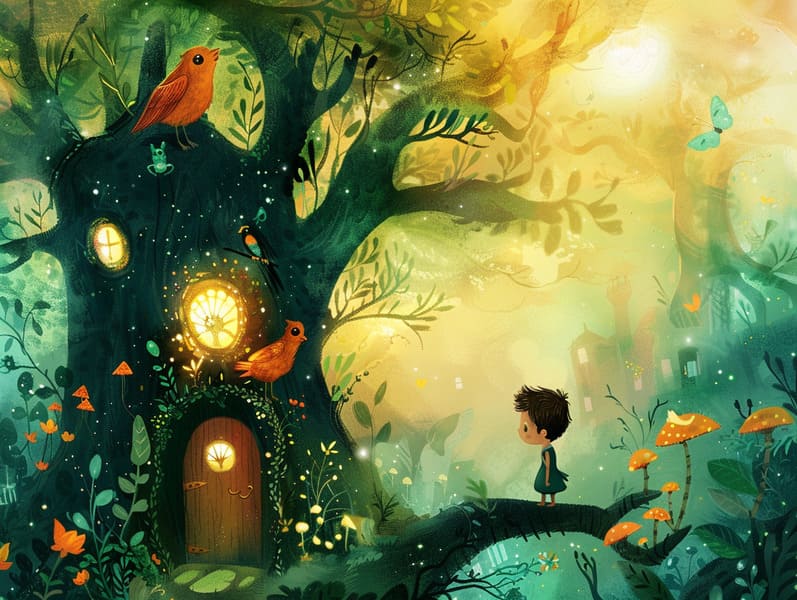Uncovering the Past of Fairy Tales to Read with the Consistent Enchantment.
Uncovering the Past of Fairy Tales to Read with the Consistent Enchantment.
Blog Article

Popular fairy tales have timeless appeal. These stories have been shared from one generation to the next ages before they were ever put on paper. They originated from a variety of traditions, including Western traditions. They were initially passed along among elders, often carrying themes and messages mirroring the societal norms and beliefs of the time.
Jacob and Wilhelm Grimm, the two Grimm brothers, were among the first to gather many of these beloved stories. Their anthology, "Grimm's Fables," included classics like "The True Bride," "Hansel and Gretel," and "Snow-White and Rose-Red," which have since become pillars in the world of famous fairy tales. Similarly, Andersen's fantastical fairy tales, such as "The Mermaid's Tale," and "The Story of the Ugly Duckling," have gained the love worldwide, cementing their place in the pantheon of beloved fairy tales.
Despite their historical roots, these stories remain as pertinent as ever, especially as kids' bedtime tales. These charming stories are now available in many formats, including vividly illustrated books, captivating animations, and digital fairy tales.
Their continued relevance can be linked to several whimsical characteristics:
Key Lessons: Old fairy tales often impart important moral lessons. Fairy tales like "The Shepherd Boy and the Wolf" teach the significance of honesty, while "The Tale of the Tortoise and the Hare" underline the virtues of resolve and humbleness. These narratives offer the young clear distinctions between virtue and vice, molding their moral compass in a mild yet significant way.
Empathy and Awareness: Traditional fairy tales frequently showcase characters facing difficulties and adversities, fostering kids to identify with their struggles and applaud their triumphs. For instance, "Beauty's Beast" points out the benefit of looking beyond appearances to know the real person of a character, building perception and recognition.
Cultural Comprehension: Many traditional fairy tales are deeply embedded in the cultural contexts from which they were born. Delving into these fairy tales can provide fascinating glimpses into different backgrounds, encouraging a sense of global awareness and awareness.
Creativity and Imagination: The enchanted elements in ancient fairy tales—supernatural elements—spark children’s fantasy worlds. These tales transport readers to mythical realms, revitalizing inventive dreams and a sense of astonishment that endures a lifetime.
Timeless fairy tales are not only fascinating but also enlightening. They provide bewitching tools in advancing various mind and heart abilities in little ones. When old fairy tales are narrated, they enhance speech development by showing new words and complicated sentence structures. This practice also develops listening abilities and focus, find it here as young ones remain attentive, anticipating to see what happens next.
Furthermore, discussing the themes and characters of timeless fairy tales can enhance thinking skills and thinking skills. Children are educated to see patterns, anticipate outcomes, and know cause and effect. These contemplations also advance little ones express their thoughts and feelings, boosting their emotional intelligence.
In today’s online age, the availability of free fairy tales online has made these fairy tales more acquirable than ever. Internet sites and software feature extensive collections of popular fairy tales that can be browsed or listened through anytime, anywhere. Fairy tales voiced are particularly favored, offering an interactive way for little ones to immerse in these spellbinding stories. Narrated books and read-to-me videos carry characters and settings to life, often supported by whimsical sound effects and melodies that enhance the story journey.
The everlasting appeal of ancient fairy tales lies in their ability to evolve to new eras while maintaining their essential themes. Contemporary takes of these narratives often include more representative protagonists and modern settings, making them meaningful to today’s audience. However, the essential messages of fortitude, goodness, and justice remain unchanged, continuing to resonate with children of all ages.
Timeless fairy tales also offer a sense of comfort and knownness. They make accessible a structured narrative with a plain beginning, middle, and end, often coming to a close with the finalization of conflicts and the triumph of right over wrong. This consistency can be encouraging for little ones, furnishing a sense of sturdiness in an always shifting world.
Old fairy tales continue to mesmerize and enlighten new generations, maintaining their magic and pertinence in modern society. As nighttime stories for kids, they give a perfect blend of charm and understanding, enriching moral values, empathy, and creativity. The presence of web-based fairy tales and the prevalence of fairy tales spoken assure that these traditional stories remain accessible to new generations.
By perpetuating and telling these fairy tales, we continue to laud the rich tapestry of tradition and cultural heritage. Whether you are browsing a richly illustrated book, enjoying a online collection, or listening via an audio story, the attraction of popular fairy tales is always within reach. These narratives reveal of the unchanging ability of tales and its ability to bind us across epochs and places.
Even if you are discovering a richly illustrated book, delving into a digital collection, or playing an spoken story, the splendor of Grimm's fairy tales is always within reach.
These stories show us of the unceasing power of tales and its ability to join us across generations and cultures, forging a link that delights and instructs alike.